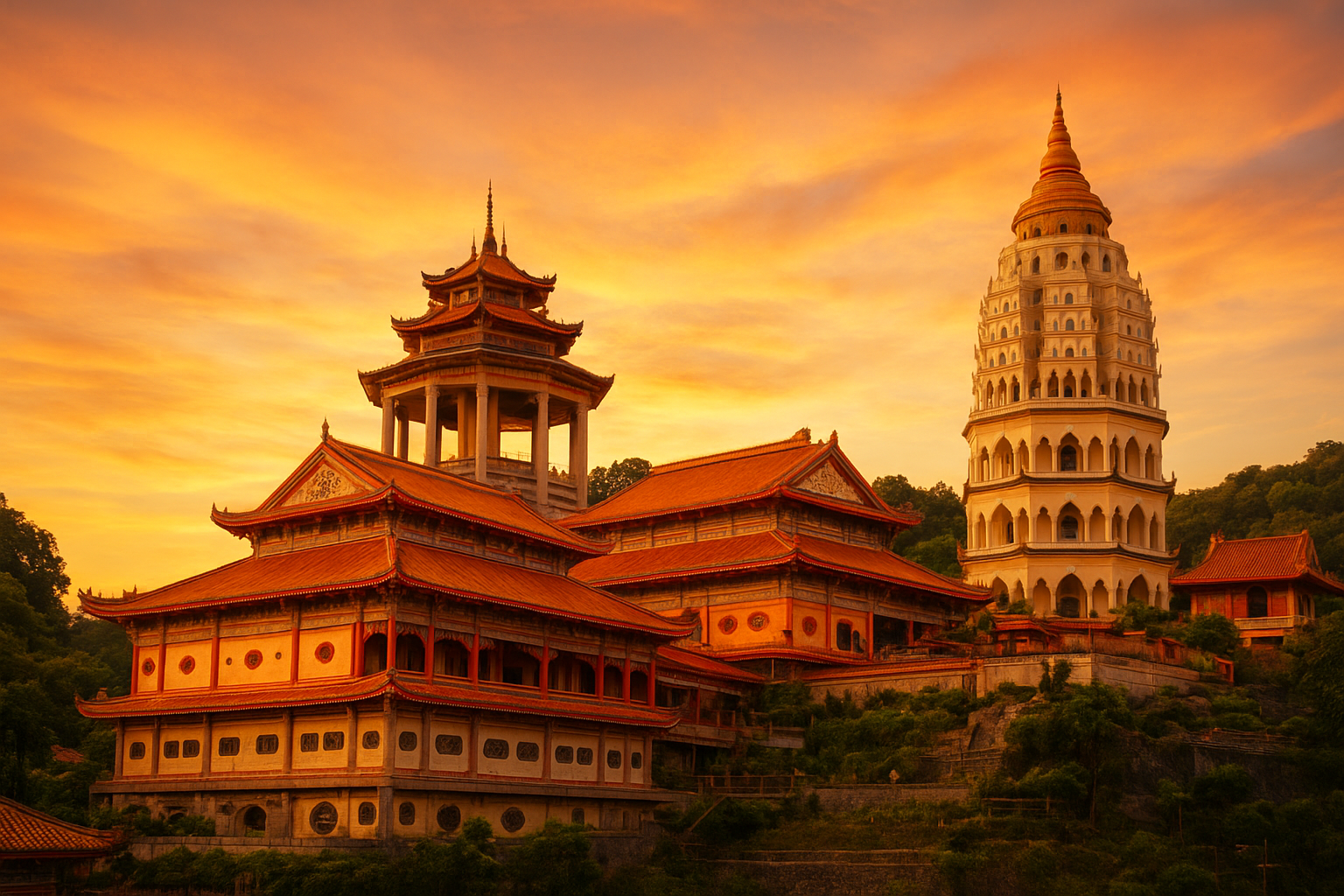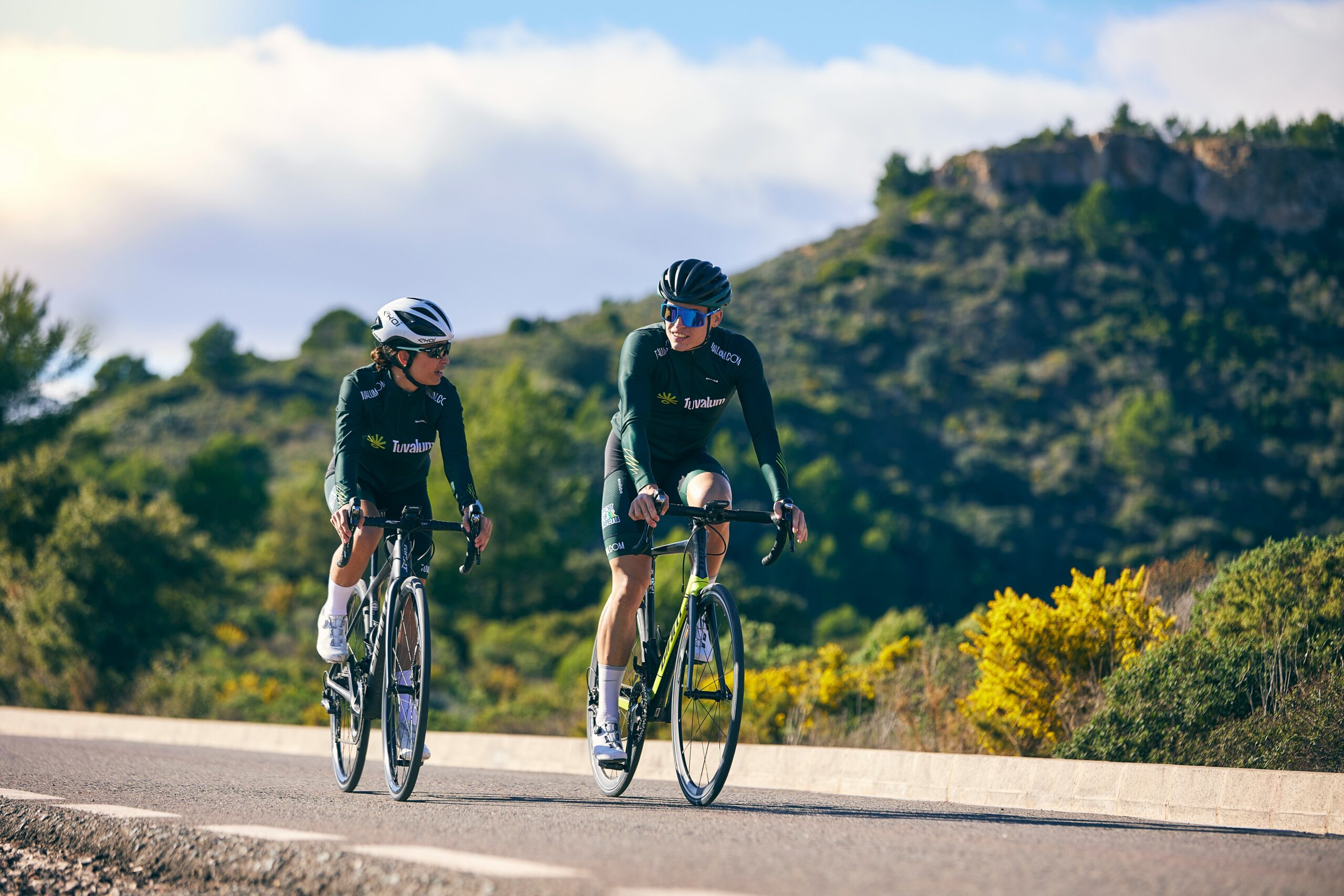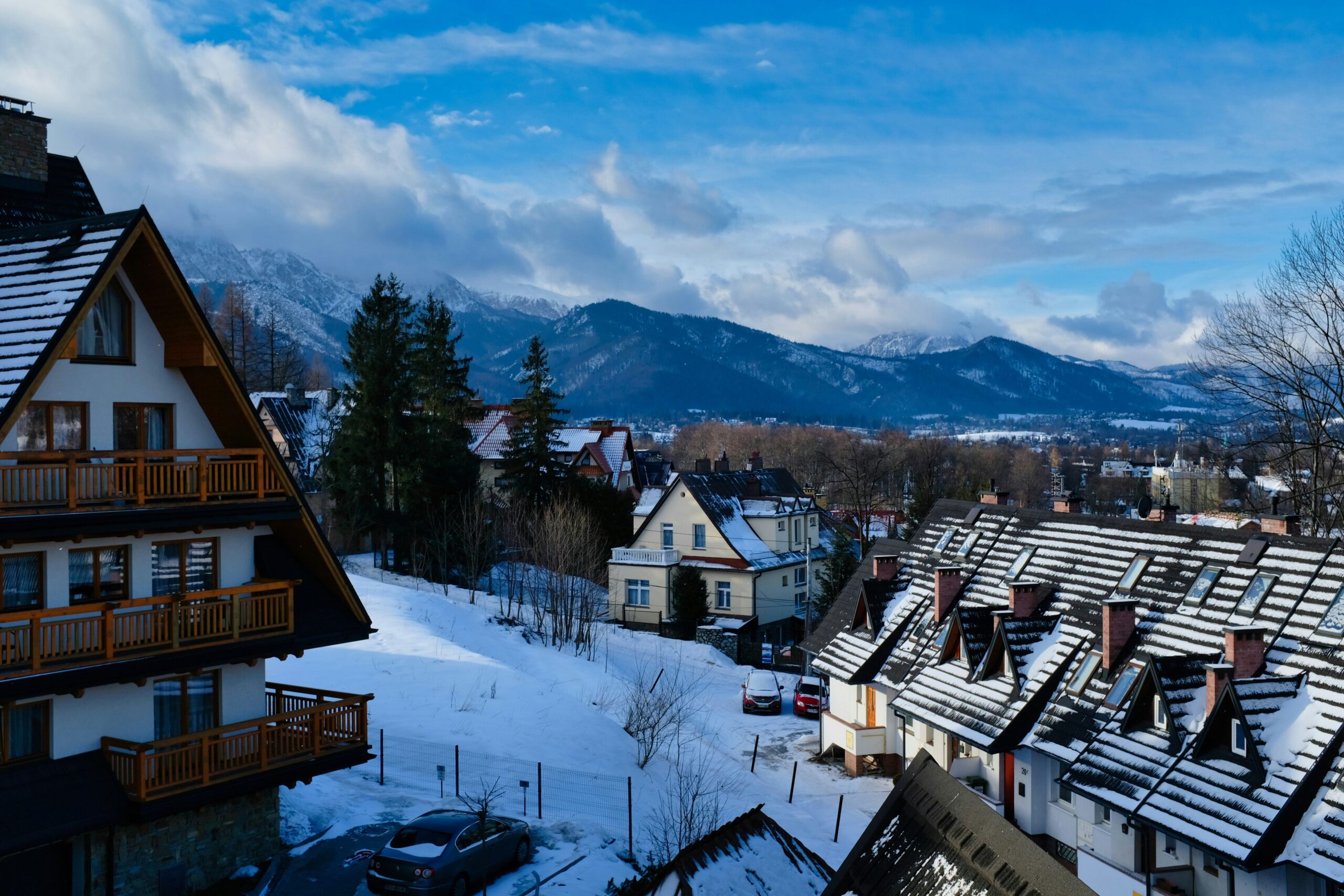Penang, Malaysia: Amazing Food, Affordable Coworkings, and Cultural Diversity
Malaysia’s Penang Island has quietly established itself as one of Southeast Asia’s most compelling destinations, attracting everyone from weekend food enthusiasts to digital nomads seeking their next long-term base. This UNESCO-listed gem combines centuries of multicultural heritage with modern amenities, creating an environment where traditional shophouses neighbor sleek coworking spaces, and street food vendors serve dishes that have earned international acclaim.
What sets Penang apart from other Southeast Asian hotspots isn’t just one standout feature, but rather how seamlessly different elements come together. You can start your morning working from a colonial-era café, spend your lunch break exploring ancient temples, and end your evening sampling what many consider the best street food in Asia. All while spending far less than you would in Bali, Bangkok, or Singapore.
The island’s strategic position in the Strait of Malacca has shaped it into a cultural crossroads where Malay, Chinese, Indian, and European influences have blended over centuries. Today, this heritage translates into an incredibly rich travel experience that appeals to culture seekers, food lovers, beach enthusiasts, and remote workers alike.
What Makes Penang Truly Special
Penang’s appeal lies in its authenticity combined with accessibility. While many destinations in Southeast Asia have been transformed by tourism, Penang has managed to preserve its character while adapting to modern travelers’ needs.
The island serves as Malaysia’s unofficial food capital, a title it has earned through generations of culinary innovation. The multicultural population has created fusion dishes that exist nowhere else, while traditional recipes have been perfected over decades. This isn’t just tourist-friendly cuisine either – locals are as passionate about their food scene as any visitor.
Beyond the culinary landscape, Penang offers remarkable value for money. Your accommodation costs here might equal what you’d spend on a single meal in many Western cities. Coworking spaces charge monthly rates that are often less than a day’s membership elsewhere, and transportation costs are minimal throughout the island.
The infrastructure makes life easy for international visitors. English is widely spoken, internet connectivity is reliable, and the healthcare system meets international standards. These practical advantages allow you to focus on exploring rather than navigating daily challenges.
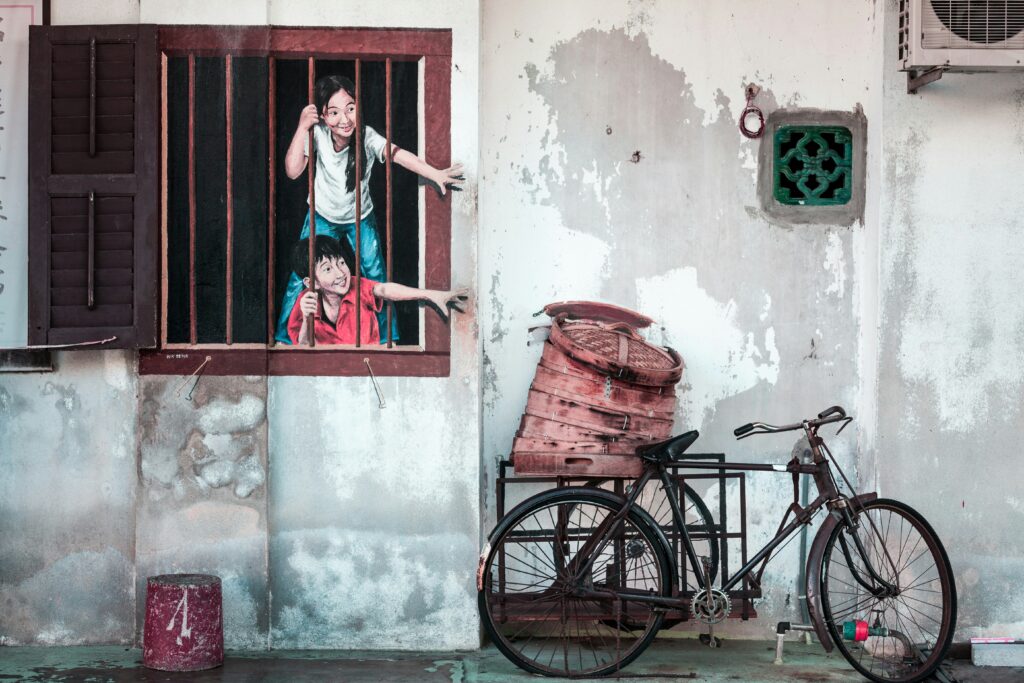
Exploring Penang’s Cultural Tapestry
George Town: Living Heritage in Motion
George Town, Penang’s capital, earned its UNESCO World Heritage status not just for its historic buildings, but for maintaining a living, breathing cultural environment. The city’s famous street art has become an attraction in itself, though it’s worth noting that this artistic renaissance began as a community-driven movement rather than a tourism initiative.
Walk through Armenian Street, Lebuh Chulia, or Muntri Street and you’ll encounter restored clan houses, traditional trades still practiced in century-old shophouses, and contemporary galleries occupying colonial buildings. The UNESCO World Heritage Centre provides detailed information about the site’s significance and conservation efforts.
For an immersive street art experience, check out Ernest Zacharevic’s official website to learn about the Lithuanian artist who sparked George Town’s street art renaissance.
Spiritual Diversity
Penang’s religious landscape reflects its multicultural heritage. Kek Lok Si Temple showcases Buddhist architecture on a grand scale, with its seven-story pagoda offering panoramic views over Air Itam. The temple complex has been expanded over more than a century, making it one of the largest Buddhist temples in Southeast Asia.
Within George Town, you can visit Hindu temples, Chinese clan houses, Islamic mosques, and Christian churches, often within walking distance of each other. This religious diversity isn’t just architectural – it influences daily life, festivals, and even the food scene.
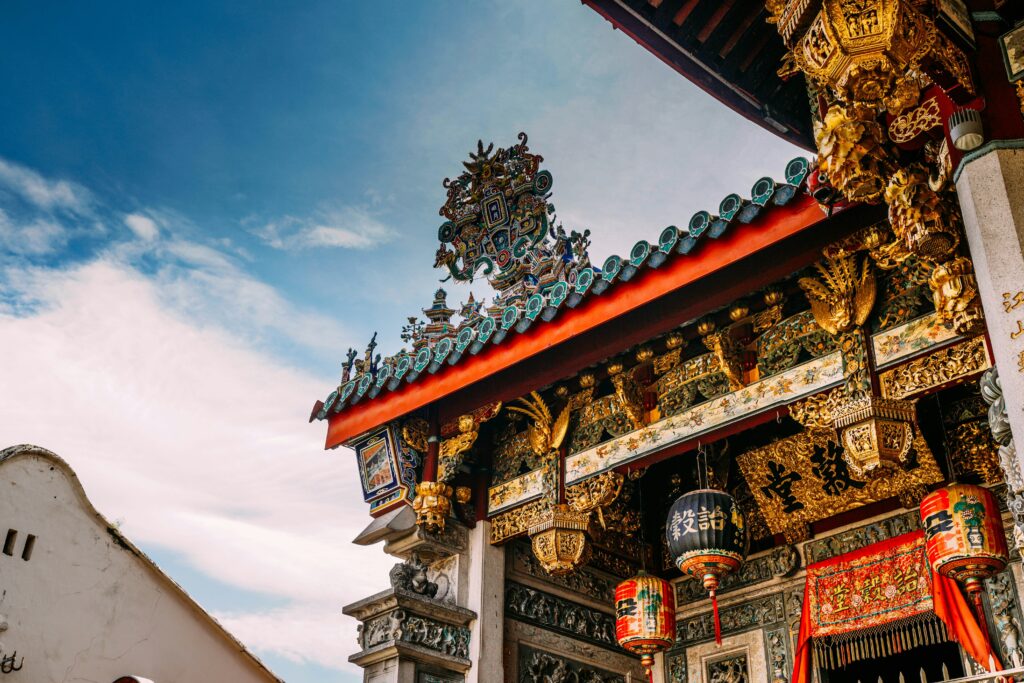
Natural Escapes
Penang National Park proves that the island offers more than urban attractions. Despite being one of the world’s smallest national parks, it encompasses diverse ecosystems including pristine beaches, mangrove forests, and hiking trails. The official park website provides trail maps and visitor information for planning your visit.
For panoramic views without the hiking, the Penang Hill Railway provides access to cooler temperatures and colonial-era architecture at 830 meters above sea level. The funicular system itself is over a century old and has become an attraction in its own right.
The Food Scene That Defines Penang
Penang’s food culture goes far deeper than tourist-friendly restaurants. The island’s hawker centers serve dishes that have been refined over generations, often by families who have operated the same stall for decades. This isn’t fusion cuisine created for international palates, but authentic local food that happens to appeal to travelers worldwide.
Char Kway Teow represents Penang cooking at its finest – rice noodles stir-fried over high heat with prawns, eggs, bean sprouts, and Chinese sausage. The best versions achieve a perfect balance of sweet, salty, and umami flavors while maintaining the “wok hei” or breath of the wok that comes from expert technique.
Penang Laksa (locally called Asam Laksa) offers something completely different – a tangy, fish-based soup that CNN once ranked among the world’s best foods. The broth combines tamarind, lemongrass, and chilies with fresh herbs, creating a complex flavor profile that’s uniquely Penang.
Nasi Kandar originated in Penang’s Indian Muslim community and has become integral to the island’s food identity. Rice serves as the base for an array of curries, vegetables, and proteins, with each vendor offering their own combination of spices and cooking techniques.
The Malaysia Tourism Board provides extensive guides to Penang’s food trails and hawker centers, helping you navigate the incredible variety of options available.
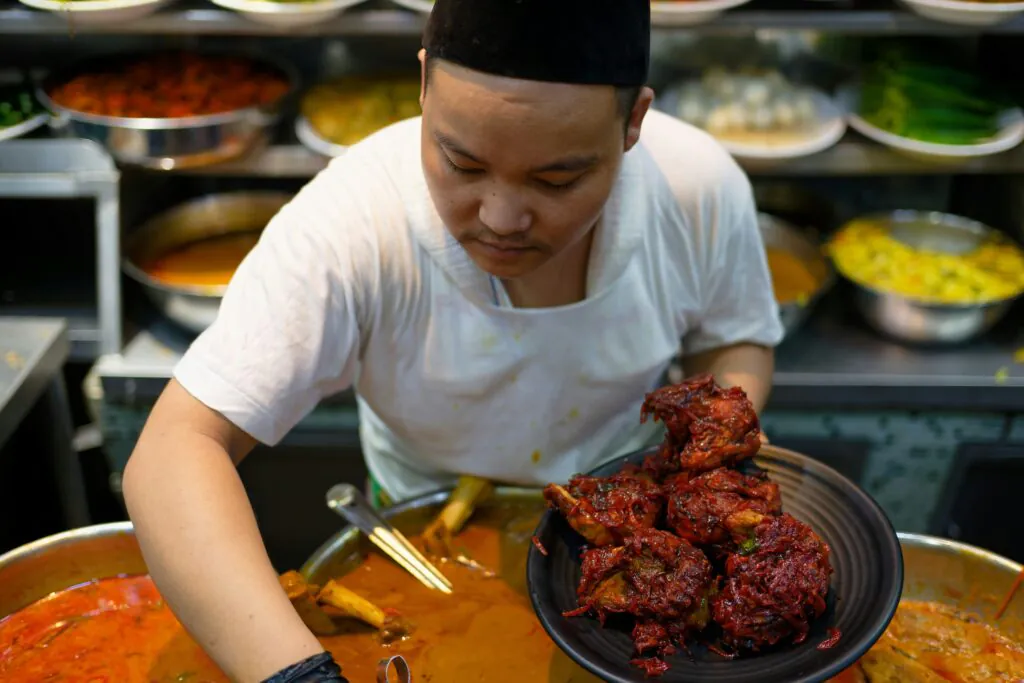
Digital Nomad Infrastructure
Penang’s coworking scene may be smaller than Bali’s or Bangkok’s, but it offers excellent value and growing community connections. Monthly memberships at quality coworking spaces cost a fraction of what you’d pay in major Western cities, while providing reliable internet, professional environments, and networking opportunities.
Settlements Coworking in George Town has established itself as a hub for entrepreneurs and remote workers, offering both hot desks and private offices. The space emphasizes community building and regularly hosts networking events that bring together locals and international professionals.
Global chains like Regus provide familiar amenities and reliable infrastructure for those who prefer established operators. Common Ground offers a more design-forward approach with multiple locations throughout Malaysia.
Beyond dedicated coworking spaces, many of George Town’s heritage cafés double as excellent work environments. Places like China House, Mugshot Café, and Kek Seng Coffee Shop offer reliable WiFi, comfortable seating, and the atmospheric charm of working in restored colonial buildings.
Internet speeds throughout Penang are generally suitable for video calls, cloud-based applications, and streaming services. The island’s infrastructure has improved significantly in recent years, making it a viable option for professionals whose work depends on consistent connectivity.
Cultural Calendar and Festivals
Penang’s multicultural population means festivals happen throughout the year, often overlapping in fascinating ways. Chinese New Year brings lion dances and elaborate decorations to George Town’s streets, while Thaipusam sees Hindu devotees carrying kavadi in colorful processions.
The George Town Festival, held annually around July and August, transforms the heritage city into an arts playground with performances, exhibitions, and workshops that celebrate both traditional and contemporary culture. This month-long event attracts international artists while showcasing local talent.
Deepavali (Diwali) lights up Little India with oil lamps and colorful rangoli, while Hari Raya Aidilfitri opens Malay homes to visitors for traditional feasts. The beauty of Penang’s festival calendar is how these celebrations often involve the broader community, regardless of religious or ethnic background.
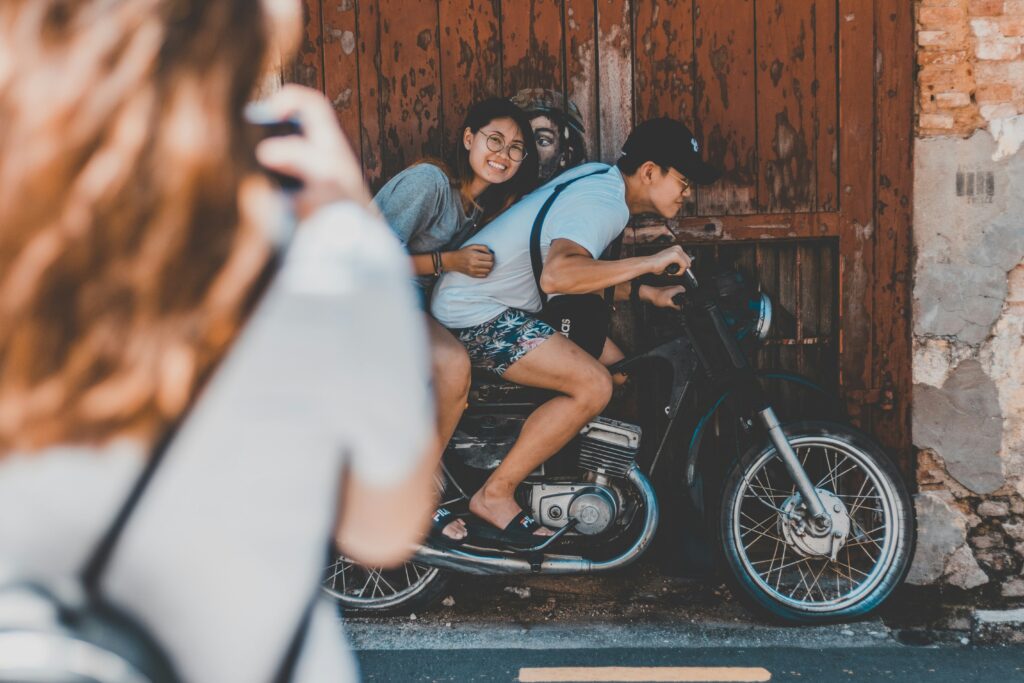
Practical Information for Your Penang Adventure
Money Matters
The Malaysian Ringgit (MYR) currently offers excellent value for most international currencies. Street food meals cost between 5-12 MYR ($1-3 USD), while restaurant dining ranges from 15-40 MYR per dish. Budget accommodation starts around 30-50 MYR per night, with mid-range options available for 100-200 MYR.
For digital nomads, monthly apartment rentals in George Town average 800-1,500 MYR, depending on location and amenities. Coworking memberships range from 200-400 MYR monthly, making the total cost of living remarkably affordable compared to other nomad destinations.
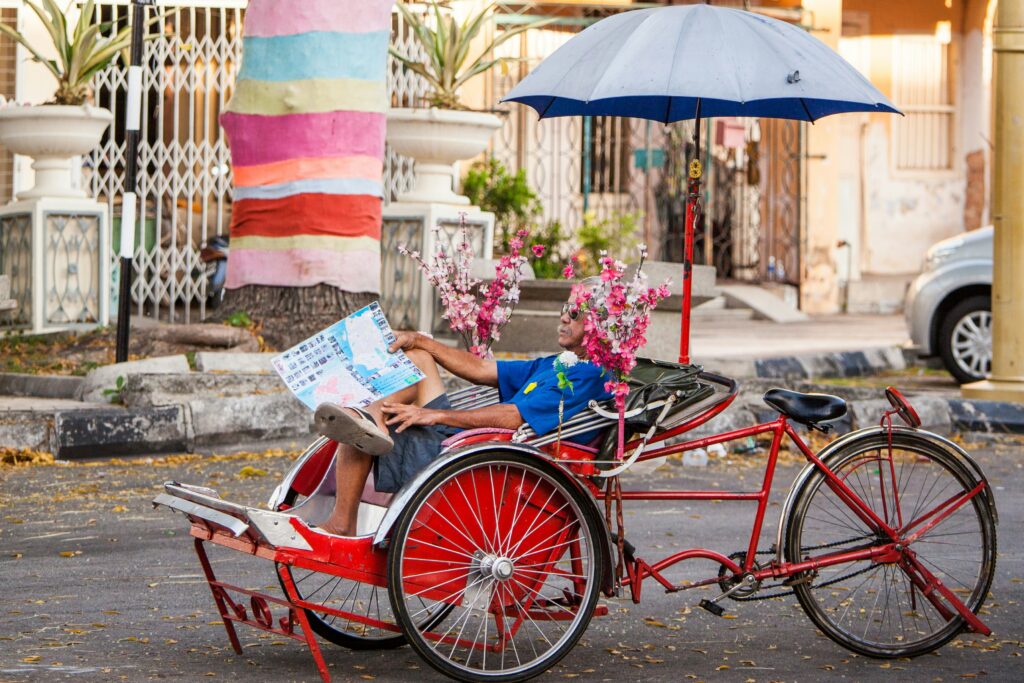
Where to Base Yourself
George Town remains the top choice for culture enthusiasts and remote workers, offering the best concentration of coworking spaces, restaurants, and historic attractions. The UNESCO core zone provides the most atmospheric accommodation options, while areas like Lebuh Chulia offer more budget-friendly choices.
Batu Ferringhi appeals to beach lovers and those seeking resort-style accommodation. The area has evolved beyond its package tourism origins to include boutique properties and beachfront dining options. However, commuting to George Town for work or cultural activities requires planning.
Tanjung Bungah offers a middle ground between urban George Town and beachy Batu Ferringhi. This quieter area provides easy access to both while maintaining a more residential feel that appeals to longer-term visitors.
Safety and Local Interactions
Penang maintains Malaysia’s reputation as one of Southeast Asia’s safest destinations. Standard travel precautions apply – watch for pickpockets in crowded areas and avoid displaying expensive electronics openly – but violent crime affecting tourists is extremely rare.
The local population’s friendliness toward foreigners isn’t just politeness; Penang’s economy has long depended on trade and tourism, creating genuine comfort with international visitors. English proficiency is high, particularly in George Town and tourist areas, making daily interactions straightforward.
Getting There and Around
Penang International Airport connects directly to major Asian cities including Bangkok, Singapore, Jakarta, and Hong Kong. Budget airlines like AirAsia make regional travel affordable, with flights to Bangkok often costing less than $50.
The Rapid Penang bus system provides comprehensive coverage of the island at minimal cost. Routes 101 and 102 connect major areas, while the free CAT (Central Area Transit) buses serve George Town’s core zone.
Grab operates throughout Penang, offering both car and motorcycle options. For longer stays, many nomads find renting a motorcycle provides the most flexibility for exploring the island thoroughly.
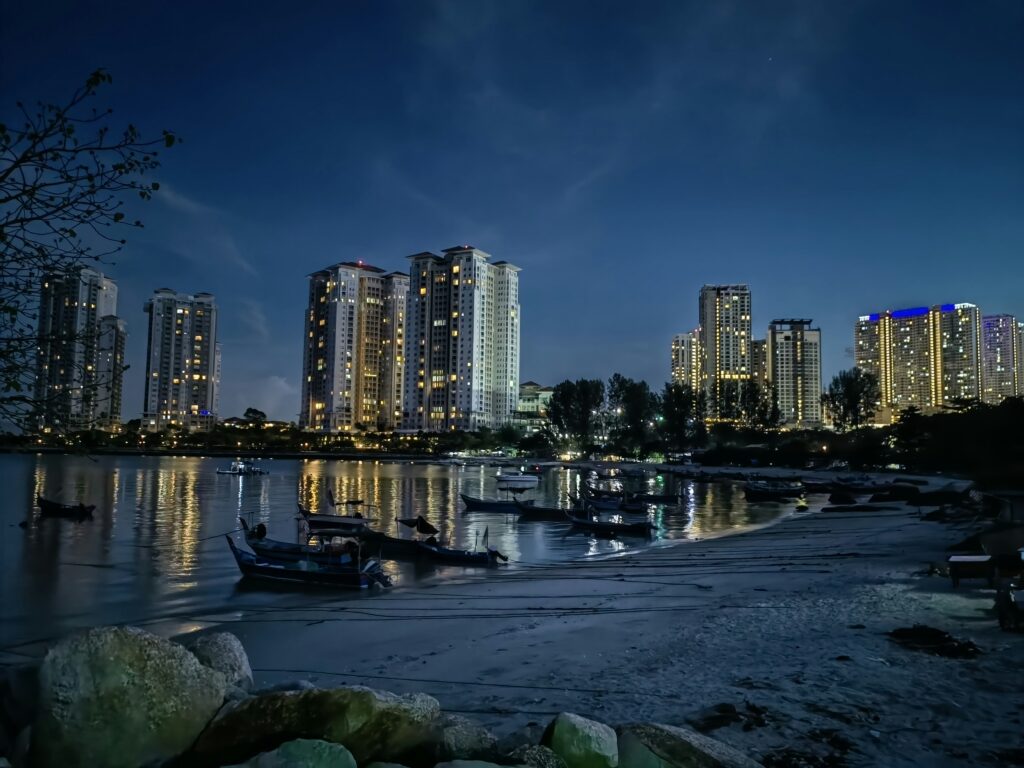
Essential Apps and Tools
Grab serves multiple functions in Penang – transportation, food delivery, and even grocery shopping. The app’s widespread adoption makes it indispensable for daily life.
Google Translate proves useful for reading Chinese signage and communicating in local languages, though English works in most situations.
Klook offers competitive prices for regional flights, tours, and activities, often with better rates than booking directly.
FoodPanda and Grab Food provide delivery from restaurants that don’t typically offer the service, expanding your dining options significantly.
Crafting Your Penang Experience
The key to maximizing your time in Penang lies in understanding that it rewards curiosity over rigid planning. Some of the island’s best experiences happen when you follow a interesting aroma down a side street, strike up a conversation with a fellow coworking member, or accept an invitation to a local festival.
Budget travelers can live comfortably on $25-35 USD daily, including accommodation, meals, and local transportation. Digital nomads typically spend $40-60 USD daily for a comfortable lifestyle with coworking access and occasional restaurant meals. Those seeking luxury can enjoy high-end experiences for far less than comparable destinations.
The island works equally well for short visits and extended stays. Weekend travelers can sample the food scene and explore George Town’s highlights, while month-long visitors can develop routines, build local connections, and thoroughly explore both urban attractions and natural areas.
Penang succeeds because it doesn’t try to be everything to everyone. Instead, it excels at being authentically itself – a place where centuries of cultural mixing have created something unique, where local pride in food traditions welcomes curious visitors, and where modern amenities support both travelers and residents without overwhelming the island’s character.
Whether you’re planning a food-focused vacation, evaluating your next digital nomad destination, or simply seeking a place where your travel budget stretches further without sacrificing experiences, Penang offers a compelling combination of authenticity, affordability, and accessibility that’s increasingly rare in today’s travel landscape.
Related Post: Luang Prabang, Laos: Where Ancient Temples Meet Modern Coffee Culture
